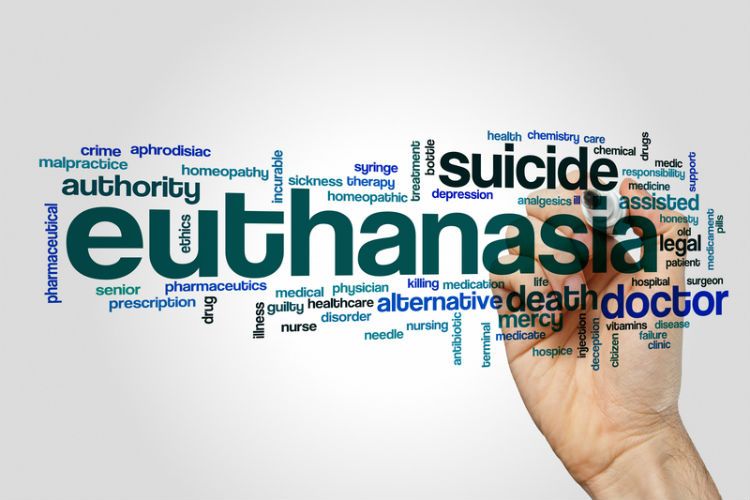Is It Really Dying With Dignity?
Mar 21, 2019 • 12 views
Euthanasia is the practice of intentionally ending one's life in order to relieve from pain and suffering. Euthanasia is also known as 'mercy killing'. It is categorized into voluntary, involuntary, passive and active euthanasia.
What is voluntary, involuntary, passive and active euthanasia?
Voluntary Euthanasia is euthanasia that is conducted with the consent of the patient.
Involuntary Euthanasia is euthanasia that is conducted when the patient’s consent is unavailable because the patient is unconscious or unable to make a meaningful choice between living or dying - and another person (usually a family member) takes the decision.
Passive Euthanasia is the death that is performed by withdrawal of the life sustaining equipment, whereas, Active Euthanasia is the ending of life by deliberate administration of drugs.

There are various ways for euthanasia. A few methods that are included are :
Lethal injection - injection of a lethal dose of a drug, such as a known poison, KCL, etc.
Asphyxiation - the most common gas that is used is carbon monoxide. Nerve gases such as sarin and tabun are also added to ensure the death of a patient.
Another method is using Dr. Jack Kevorkian’s death machine in which the patient uses the machine to end his life painlessly at a time chosen by him.
Passive euthanasia is now legal in India under strict guidelines. On 9th March 2018 the Supreme Court of India legalised passive euthanasia by means of withdrawal of life support to patients in a permanent vegetative state. This decision was made as a part of the verdictin a case involving Aruna Shanbaug, who had been in the permanent vegetative state until her death.
There is an ongoing debate for a long time whether euthanasia should be allowed or not. A lot of people are in favour of euthanasia, whereas, there are a certain group of people that are against euthanasia. The dispute is regarding whether the interests of the patients should be kept in mind or whether the society’s interests are to be taken into consideration.
Those in favor of euthanasia feel that the decision of the patient should be accepted.
The opponents feel that when suicide is not allowed, then euthanasia should also not be allowed. Since the term “terminally-ill” has not been clearly defined and even the medical fraternity is not clear about the term, euthanasia once legalised would only lead to misuse, because once voluntary euthanasia is allowed then non-voluntary and involuntary euthanasia will also be allowed. The opposition argues that the practice of euthanasia should only be done in the rarest of cases.
Another important point emphasised by the supporters of euthanasia is that a patient will wish to end his life only if he is in extreme pain or agony and would prefer to die a painless death rather than live a miserable life with pain and agony. Thus, from a moral point of view the patient should be allowed to die painlessly when in any case he knows that he is going to die due to his terminal illness. The question that arises over here is that why increase the painful period for the patient when he is going to die?
They argue that by increasing the painful period they are not only increasing the pain but they are also increasing the medical expenses for the families.
There is an intense opposition from religious groups and the medical practitioners because they feel that it is not the “right to die” rather it is the “right to kill”. According to them this is completely against the medical ethics, therefore, they encourage the patients to live a painful live with strength physically as well as morally.
The opponents feel if the patient is showered with love and hope, and is given the proper care, the tendency to take this decision can be lowered.
The question that arises here is that whether it is right to utilise the medical facilities on a person who in any way is going to die?
Another argument made by the opposition is that not all deaths are painful and by encouraging euthanasia, the search for new cures or treatments will be discouraged as this will be the cost effective method to treat the terminally ill patients, and it will give too much power to the doctors.

Morally, socially and ethically the practice of euthanasia is considered as wrong. The question that still lies open is that whether or not euthanasia should be allowed?
